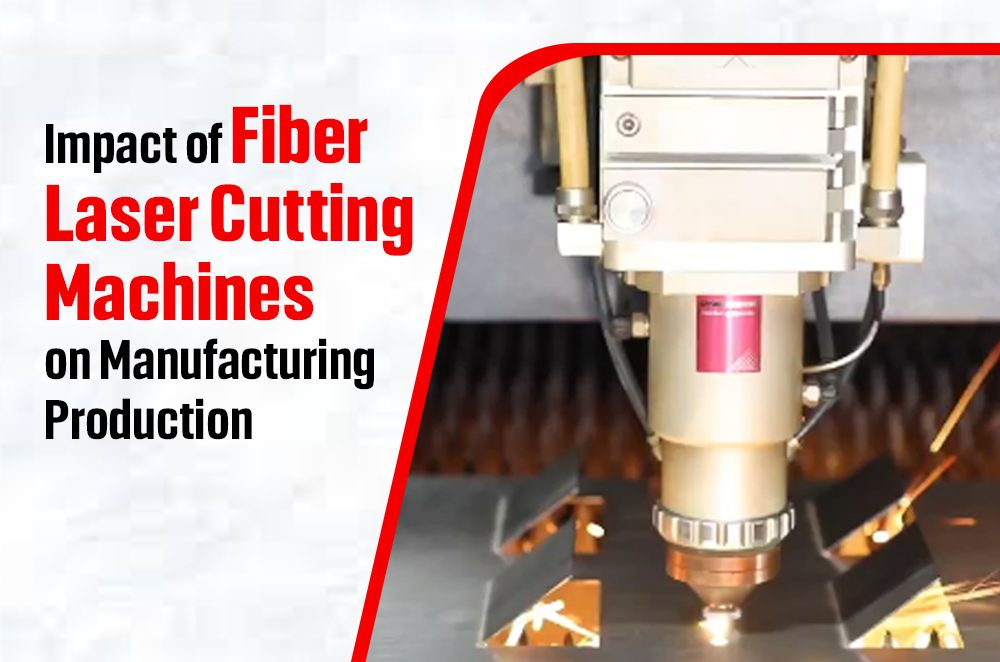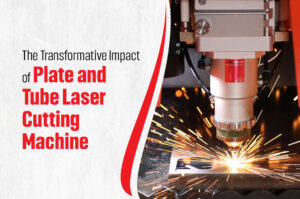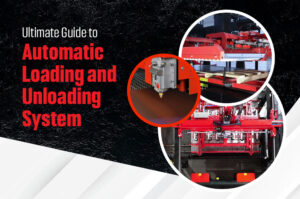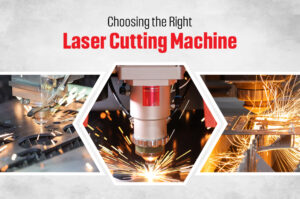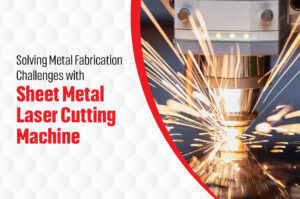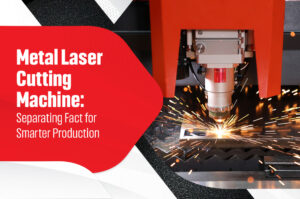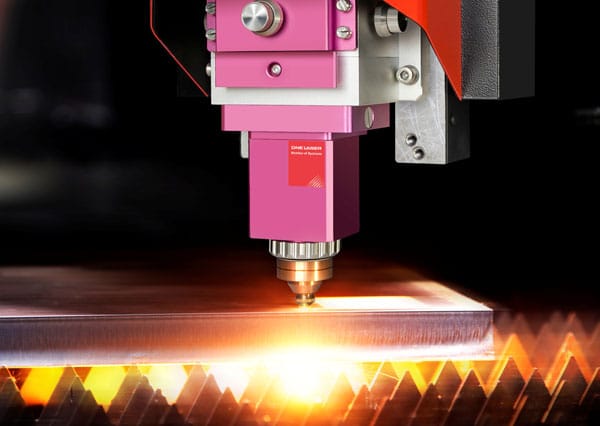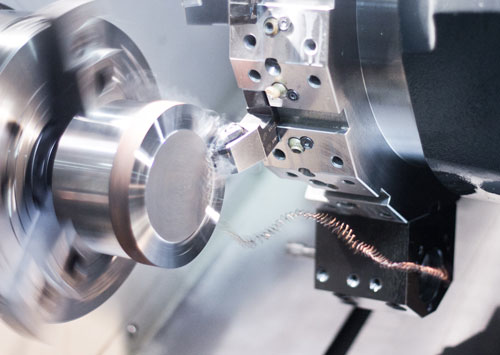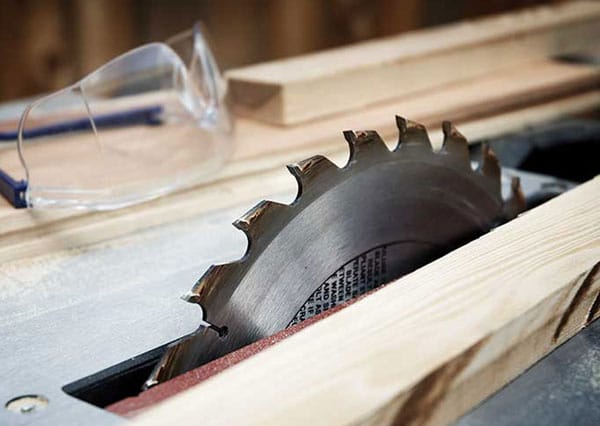In the ever-evolving landscape of manufacturing, efficiency and precision are pivotal. Among the transformative technologies shaping the industry, the fiber laser cutting machine stands out as a groundbreaking innovation. Its ability to deliver exceptional accuracy, speed, and versatility has revolutionized production processes across various sectors. In this blog, we delve into how fiber laser cutting machines enhance manufacturing productivity and redefine industry standards.
Evolution of Cutting Technology: From Traditional Methods to Fiber Laser Cutting Machines
Traditional Methods for Cutting Sheet Metal and Metal
Before the advent of fiber laser cutting machine, industries relied heavily on traditional cutting methods such as mechanical sawing, plasma cutting, and oxy-fuel cutting. While these methods were effective for their time, they came with significant limitations:
Mechanical Sawing: This method often resulted in rough edges and required extensive post-processing. The process was labor-intensive and lacked consistency, particularly for intricate designs.
Plasma Cutting: While faster than sawing, it struggled with precision and was not ideal for thin metals. Additionally, plasma cutting generated significant heat, which could warp the material.
Oxy-Fuel Cutting: Primarily used for thicker metals, it generated excessive heat, leading to material distortion and safety concerns due to the use of flammable gases.
These methods were labor-intensive, time-consuming, and lacked the precision required for modern manufacturing demands. Additionally, they generated a considerable amount of waste, increasing production costs and inefficiencies. Environmental concerns also arose from the high energy consumption and emissions associated with these processes.
The Transformation with Fiber Laser Cutting Machine
The introduction of fiber laser cutting machines marked a turning point in the manufacturing industry. Unlike traditional methods, these machines use a concentrated laser beam to cut through materials with exceptional precision and speed. The transformation brought by fiber laser cutting machines can be summarized as follows:
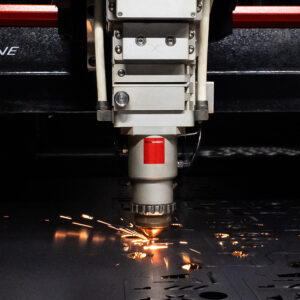 Precision Redefined: Fiber lasers deliver unmatched accuracy, making it possible to achieve intricate designs and minimal tolerances.
Precision Redefined: Fiber lasers deliver unmatched accuracy, making it possible to achieve intricate designs and minimal tolerances.
Speed and Efficiency: These machines significantly reduce cutting times, enabling faster production cycles and higher throughput.
Reduced Waste: The precise cutting process minimizes material waste, lowering production costs.
Automation Integration: Fiber laser cutting machines are equipped with CNC systems, enabling automated and consistent operations.
Technological Advancements: Developments in laser optics, beam delivery, and software control have further enhanced the capabilities of fiber laser cutting machines, making them more versatile and user-friendly.
The shift from traditional methods to fiber laser cutting machines has not only improved production efficiency but also reduced the environmental impact of manufacturing processes.
Transforming Production Efficiency with Fiber Laser Cutting Machine
Fiber laser cutting machines’ automation capabilities play a significant role in enhancing production efficiency. Features like automated material loading and unloading, real-time monitoring, and error detection reduce human intervention. These advancements ensure seamless workflows and consistent output, even in high-demand scenarios.
Additionally, the integration of AI and IoT technologies in modern fiber laser cutting machines enables predictive maintenance and remote operation, further improving operational efficiency.
Challenges and Considerations for Fiber Laser Cutting Machines
While fiber laser cutting machine offer numerous benefits, manufacturers should consider:
The initial investment cost and required training for operators.
Maintenance needs to ensure optimal performance.
Compatibility with specific materials and production requirements.
To address these challenges, businesses can explore financing options, government incentives, and partnerships with machine suppliers for training and support. Regular maintenance schedules and investing in operator training can also maximize the potential of fiber laser technology.
Applications of Fiber Laser Cutting Machine in Manufacturing
Fiber laser cutting machines have revolutionized manufacturing by enhancing precision, speed, and versatility across various industries. Their ability to handle diverse materials with consistent quality makes them indispensable in a range of applications. Let’s delve into how these machines are shaping different sectors.
1. Aerospace and Aviation
In the aerospace and aviation industries, precision is paramount. Components must meet stringent specifications to ensure safety and performance:
Lightweight Structures: Fiber lasers cut intricate designs in lightweight materials like titanium and aluminum, crucial for reducing aircraft weight.
High-Performance Alloys: The ability to handle tough, heat-resistant alloys makes fiber lasers ideal for aerospace engineering.
Safety-Critical Parts: Laser technology ensures consistent quality, which is vital for producing parts like turbines and brackets.
2. Automotive Manufacturing
The automotive industry benefits significantly from fiber laser cutting machines due to their efficiency and accuracy:
Prototyping: Rapid prototyping allows manufacturers to test designs quickly, shortening development cycles.
Mass Production: High-speed cutting ensures that large volumes of components, like chassis parts and engine components, are produced seamlessly.
Customizations: Laser machines enable the production of personalized car parts, catering to niche markets.
For example, electric vehicle (EV) manufacturers use fiber laser machines to create lightweight battery housings, contributing to better energy efficiency.
3. Electronics and Electrical Equipment
The miniaturization of electronic devices has increased the demand for precise and clean cuts, a task fiber laser cutting machines excel at:
Circuit Boards: High-precision lasers cut through delicate PCB materials without damaging components.
Micro Components: Fiber lasers produce tiny, intricate parts required in smartphones, tablets, and other gadgets.
Heat-Sensitive Materials: The minimal heat-affected zone ensures that sensitive materials remain undamaged during the cutting process.
This technology supports advancements in wearable technology and microelectronics, enabling innovations in compact devices.
4. Metal Fabrication
Metal fabrication industries rely on fiber laser cutting machines for their ability to process a wide range of metals:
Structural Components: Used in construction and infrastructure for cutting beams, sheets, and panels.
Artistic Designs: Ideal for creating decorative metal pieces with intricate patterns.
Custom Fabrication: Supports tailored solutions for industries like furniture and interior design.
From large-scale industrial projects to customized artwork, fiber laser cutting machines offer unmatched flexibility.
5. Medical Devices
The medical industry demands precision and hygiene, both of which fiber laser cutting machines deliver:
Surgical Instruments: Accurate cutting ensures the reliability and safety of medical tools.
Implants: Used to craft implants with exacting standards to match patient-specific requirements.
Disposable Equipment: Facilitates high-volume production of items like stents and catheters.
Their non-contact cutting process maintains the integrity and sterility of medical-grade materials.
6. Signage and Advertising
Signage and advertising industries require versatile and efficient cutting solutions for diverse materials:
Acrylic and Plastics: Fiber lasers create smooth edges for vibrant signage.
Metal Lettering: Precision cuts in metal ensure durability and elegance for outdoor signs.
Custom Designs: Supports innovative advertising formats that capture attention.
The ability to work with both metals and non-metals makes fiber laser machines a preferred choice for designers.
7. Jewelry and Fashion
Even in creative industries like jewelry and fashion, fiber laser cutting machines play a pivotal role:
Jewelry Design: Delivers intricate cuts on precious metals, enabling unique and detailed pieces.
Fabric Cutting: Processes materials like leather and synthetic fabrics without fraying or damage.
Pattern Making: Creates detailed stencils for fashion designers, speeding up the creative process.
This versatility allows artisans and designers to experiment with innovative designs and materials.
How Manufacturing Will Change in the Future Due to Fiber Laser Cutting Machines
The advancements in fiber laser cutting technology are paving the way for smarter, more efficient manufacturing processes. These machines not only cater to current industrial needs but also act as catalysts for innovation across diverse sectors. Let’s explore how they are shaping the future of manufacturing.
1. Integration with Smart Manufacturing
Metal laser cutting machine is seamlessly integrating into smart manufacturing ecosystems. This evolution is driven by:
IoT Connectivity: Modern machines are equipped with IoT-enabled sensors, allowing real-time monitoring and remote diagnostics.
Automated Workflows: Automation streamlines production, reduces manual errors, and increases operational efficiency.
Data-Driven Insights: Machines generate valuable data, enabling manufacturers to optimize cutting strategies and reduce downtime.
These integrations align with Industry 4.0 principles, ensuring that manufacturers stay competitive in an evolving market.
2. Sustainability and Eco-Friendly Manufacturing
As industries shift towards sustainable practices, fiber laser cutting machines contribute by:
Energy Efficiency: Fiber lasers consume less power compared to traditional cutting methods.
Material Optimization: Advanced cutting techniques minimize material wastage, promoting eco-conscious production.
Reduced Emissions: The non-contact nature of fiber lasers reduces harmful emissions, creating a cleaner work environment.
By prioritizing sustainability, these machines help manufacturers meet regulatory standards while lowering their environmental impact.
3. Customization and Personalization
The demand for customized products is rising, and fiber laser cutting machines are empowering manufacturers to meet this trend:
On-Demand Production: Manufacturers can produce custom parts without the need for extensive tooling setups.
Diverse Material Handling: From metals to plastics, these machines handle a variety of materials, enabling versatile designs.
Enhanced Creativity: Precision cutting allows for intricate and innovative designs across industries like fashion, electronics, and architecture.
This flexibility enhances customer satisfaction and drives business growth.
4. Advancements in Cutting Speed and Accuracy
Technological developments in fiber laser cutting are pushing the boundaries of speed and accuracy:
High-Speed Lasers: Newer machines are capable of cutting materials at unprecedented speeds, reducing production time.
Micro-Level Precision: Enhanced beam quality ensures clean cuts, even on the most delicate materials.
Improved Repeatability: Advanced controls guarantee consistent quality, regardless of production volume.
These advancements position fiber laser cutting machines as essential tools for industries prioritizing efficiency and precision.
5. Expanding Applications with Emerging Technologies
The versatility of fiber laser cutting machines is expanding with emerging technologies:
Hybrid Manufacturing: Combining fiber lasers with 3D printing enables the creation of complex, high-performance components.
AI Integration: Artificial intelligence helps optimize cutting paths and adapt to material variations in real-time.
New Materials: Innovations in materials, such as composites and alloys, are expanding the scope of laser applications.
These synergies unlock new possibilities and redefine the limits of what manufacturing can achieve.
6. Driving Innovation in Small-Scale Manufacturing
Fiber laser cutting machines are also empowering small businesses and startups:
Affordable Options: The availability of compact, cost-effective models makes advanced cutting accessible to smaller operations.
Prototyping: Rapid prototyping capabilities support product development and innovation at lower costs.
Entrepreneurial Growth: Startups in industries like custom furniture, jewelry, and signage leverage these machines to bring unique products to market.
This democratization of cutting-edge technology fosters creativity and entrepreneurship.
Fiber laser cutting machines are not just tools for today’s manufacturing needs. They are shaping the future of how industries operate, innovate, and grow.
The Benefits of Fiber Laser Cutting Machines Over Traditional Methods
Sheet metal laser cutting machine have redefined the standards for material cutting, offering benefits that far exceed those of traditional methods like mechanical cutting, plasma cutting, or CO2 laser cutting. This section explores how fiber laser cutting machines outshine older technologies, emphasizing their efficiency, precision, and cost-effectiveness.
1. Superior Cutting Precision
Fiber laser cutting machines deliver unmatched precision, enabling intricate designs and complex geometries:
Micro-Level Accuracy: The focused laser beam ensures exact cuts with minimal tolerances, suitable for delicate components in industries like electronics and aerospace.
Edge Quality: Unlike traditional methods, fiber lasers leave smooth, clean edges, eliminating the need for secondary processing.
Minimal Heat-Affected Zones (HAZ): With concentrated heat, these machines avoid material distortion and maintain structural integrity.
2. Faster Cutting Speeds
Compared to traditional methods, fiber laser cutting machines are significantly faster:
Efficiency: They can process materials at speeds that mechanical or plasma cutters cannot match.
Increased Productivity: Faster operations reduce turnaround times, enabling manufacturers to meet tight deadlines.
Multi-Layer Cutting: Advanced machines can cut through multiple layers of material simultaneously, streamlining production processes.
3. Versatility Across Materials
Fiber laser cutting machines excel in handling diverse materials, unlike traditional methods limited to specific types:
Metal Cutting: They effectively cut stainless steel, aluminum, brass, and copper with exceptional precision.
Non-Metal Materials: Certain machines can process plastics, wood, and even textiles, making them versatile tools.
Reflective Materials: Traditional lasers struggle with reflective metals, but fiber lasers handle them effortlessly without beam deflection issues.
4. Energy Efficiency and Cost Savings
Energy consumption and operational costs are critical considerations in manufacturing, and fiber laser cutting machines offer significant advantages:
Lower Energy Usage: Fiber lasers consume less power compared to plasma or CO2 lasers, reducing energy bills.
Minimal Consumables: Traditional cutting methods rely on consumables like blades or gases, whereas fiber lasers require fewer replacements.
Longer Lifespan: The diodes in fiber lasers last longer, ensuring fewer maintenance costs over time.
5. Enhanced Safety and Automation
Safety and automation are integral to modern manufacturing, and fiber laser cutting machines excel in these areas:
Non-Contact Process: The laser never physically touches the material, minimizing the risk of accidents.
Automation Compatibility: These machines integrate easily with robotic arms and conveyors, supporting fully automated workflows.
Enclosed Systems: Many fiber laser cutting machines come with protective enclosures, ensuring a safer working environment.
6. Environmental Friendliness
In a world striving for sustainability, fiber laser cutting machines contribute to eco-friendly manufacturing:
Reduced Waste: Precise cutting minimizes material wastage, promoting efficient use of resources.
Lower Carbon Footprint: With energy-efficient operations, these machines reduce the environmental impact of production.
Clean Cutting: The process generates minimal fumes and requires no chemicals, creating a cleaner workspace.
7. Comparison with Traditional Cutting Methods
|
Aspect |
Fiber Laser Cutting Machines |
Traditional Methods |
|---|---|---|
|
Precision |
Extremely high |
Limited by tool design |
|
Speed |
Fast |
Moderate to slow |
|
Material Variety |
Wide range |
Restricted to specific types |
|
Energy Efficiency |
Highly efficient |
Higher energy consumption |
|
Maintenance |
Low |
Frequent, high-cost repairs |
Fiber laser cutting machines provide unparalleled advantages, making them indispensable in modern manufacturing. By outpacing traditional methods in nearly every aspect, these machines are shaping a more efficient, precise, and sustainable future.

Conclusion
Fiber laser cutting machines have changed the way industries work. They are fast, accurate and flexible, making production more efficient and reliable. These machines also help reduce waste, supporting the growing need for sustainable manufacturing. By replacing older methods, fiber laser cutting machines bring better results while saving time and costs. They are a key part of modern manufacturing, helping businesses stay competitive and environmentally responsible. Choosing these machines means choosing a smarter, more innovative, and sustainable future for the industry.

